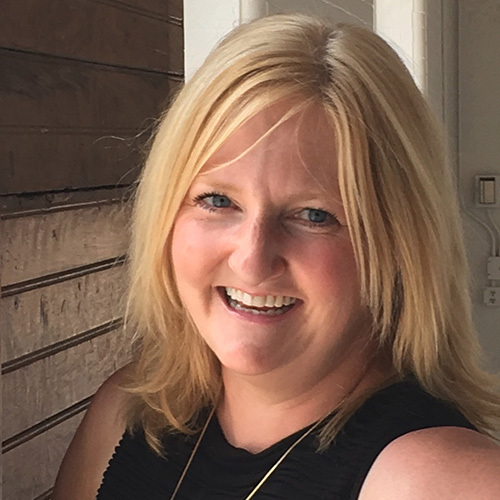
As co-director and co-founder of Map Academy, I’ve had the privilege of witnessing firsthand the transformative power of student-centered learning. Our journey began with a simple yet profound question: How can we create a high school that truly works for students who haven’t succeeded in traditional settings?
Map Academy was born out of a desire to serve students across southeastern Massachusetts who needed a different path to graduation. As a free, public charter high school, Map Academy’s alternative program is open to all Massachusetts students up to age 24. Our students come to us for a variety of reasons. Many have dropped out of traditional high school and most are seeking flexibility to better balance their personal responsibilities and life circumstances. Our mission is straightforward: to help youth find their way with individualized roadmaps designed to promote success. We combine a student-centered academic experience with a highly supportive culture and career development opportunities to equip our students with the knowledge, mindsets, and skills they need for postsecondary education and meaningful employment.
Our Student-Centered Design
At the heart of Map Academy is our student-centered design, which includes three key “hybrid” features: purposeful scheduling, strategic use of technology, and meaningful in-person interactions.
Purposeful Scheduling
One of the first things we realized when designing Map Academy was that traditional school hours simply don’t work for many of our students. That’s why we created a “hybrid” schedule – not in the sense of mixing online and in-person learning (though we do that too), but in the way we structure time.
Our building is open from 7 a.m. to 7 p.m. Monday through Thursday and from 7 a.m. to 4 p.m. on Friday. This extended day gives our students unprecedented access to school resources and support at the times when they need it most. We have a core school day from 8:30 a.m. to 3 p.m., but students have significant flexibility within that framework.
A typical day at Map Academy will include time with an anchor teacher (described below), flex blocks for scheduled activities, and interdisciplinary studio time with a team of teachers. Our schedule works in favor of engagement instead of disengagement.
But the key is that students can come and go during non-scheduled times as needed, with staff available throughout the day to support them.
We provide transportation for students who need it, including flexibly using rideshare for students over 18 years of age. We even operate for six weeks in the summer, closing for just two weeks at the beginning of the season and one week at the end for professional development. This allows our students to maintain their momentum year-round. We also have four graduation opportunities throughout the year so that students can finish up when they’re ready.
Strategic Use of Technology
While we’re not a virtual school, technology plays a crucial role in our model. We utilize a custom student-facing tracker and ensure high-quality courses that give our students access to all their coursework asynchronously. We also provide devices and wireless internet hotspots as needed. This means our students can work from anywhere, anytime – a feature that proved invaluable during the COVID-19 pandemic and continues to be essential for our students who need to balance school with work or family responsibilities.
We established a partnership with another alternative program, Bronx Arena in New York, to use their Learning Management System (LMS). Designed to be competency-based, asynchronous, and with teacher-created materials, the LMS uses a series of tasks with revision cycles that build to a challenge or capstone project to demonstrate mastery.
While our foundation relies on technology, our students are most successful when using it in combination with in-person experiences. We’ve seen around 15% of our student body make significant academic progress working entirely from home; for most of our students, the more they’re in the building, the more progress they make. But the ability to work remotely doesn’t prevent anyone from making academic progress, whether they’re working, parenting, or facing transportation challenges, it creates critical flexibility.
Meaningful In-Person Interactions
Despite our flexible schedule and use of technology, we place a strong emphasis on in-person connections. Our students are divided into three learning studios, each led by an interdisciplinary team of teachers. These studios are both physical spaces in our building and social groupings which provide ongoing support.
Every student is assigned an anchor teacher within their studio who acts as their primary support person. Students start their day with their anchor, planning their activities, discussing course loads and graduation requirements, and setting goals. After flex blocks, they return to their studio for interdisciplinary work and end their day back with their anchor.
We’ve also built in a variety of in-person activities during our flex blocks. These range from art and music classes, to marine science and photography classes, to wellness programs run at the Boys & Girls Club next door. We’re constantly evolving our offerings, changing them quarterly to keep things fresh and engaging for our students.
Preparing for the Future
A cornerstone of our model is our career development program. Every student graduates from Map Academy with two career development credits and a post-secondary plan, which they present as part of their capstone as they approach graduation. This ensures that our students aren’t just earning a diploma – they’re preparing for what comes next, whether that’s college, career training, or entering the workforce.
We’re showing that with the right support and flexibility, every young person has the chance to find their way and build the future they envision.
At Map Academy, we’re proving every day that there’s more than one way to do high school. By creating flexible schedules, purposefully leveraging technology, and prioritizing in-person relationships, we’re helping students who’ve struggled in traditional settings find their path to success.
For more from Map Academy and Rachel, listen to TLA’s podcast episode on Map Academy’s holistic and student-centered approach to education, designed to address the unique needs and life circumstances of students as an alternative high school. Or, explore TLA’s profile of Map Academy here.
The Future of Learning Series explores how purposefully balancing virtual and in-person learning can make student-centered learning a reality. Check out other installments of the blog series here:

